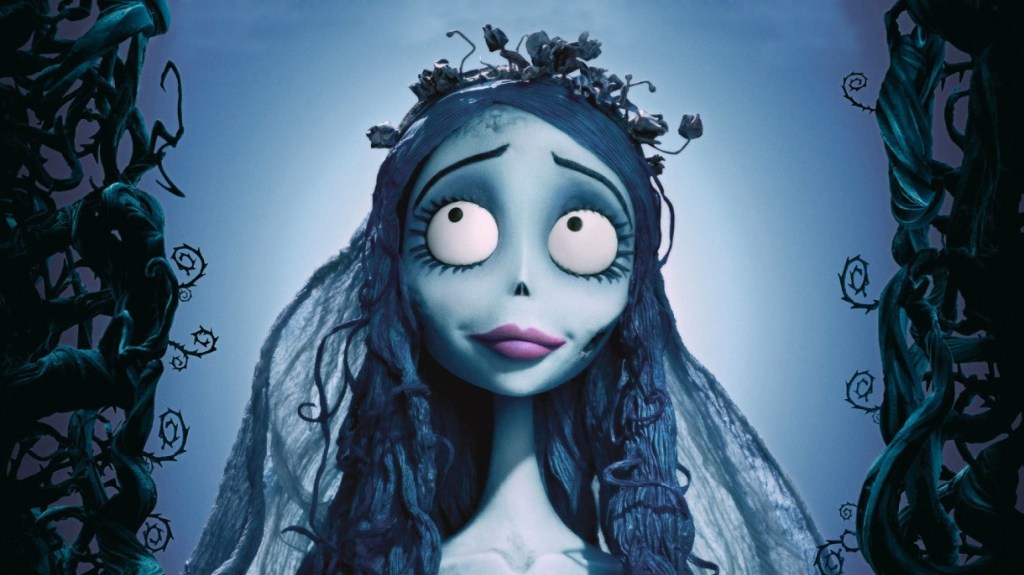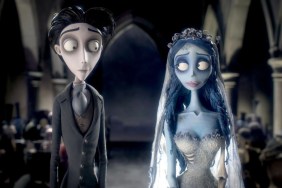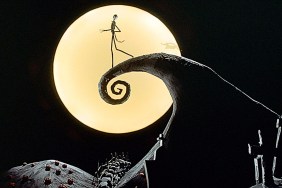While not entirely his baby, The Nightmare Before Christmas is forever associated with Tim Burton, and it’s one of the movies most think of when mentioning the veteran director.
For years, there was talk of Burton returning to stop motion. It had been an early passion, after all. A tumultuous time in the years since that movie’s release saw Burton’s star burning a little less bright thanks to flops both fair (Planet of the Apes) and unfair (Mars Attacks!). However, Burton could still create beautiful and odd films such as Big Fish and Sleepy Hollow, so it was time to make that long-awaited sojourn to stop-motion.
Corpse Bride, co-directed by Mike Johnson, is a typically Burton piece, even more naturally so than The Nightmare Before Christmas. Set in a 19th-century European village, it follows the story of Victor, a young man whisked away to the underworld and wed to a mysterious corpse bride, while his real bride, Victoria waits bereft in the land of the living.
The characters and settings capture that signature style seen in Burton’s earlier drawings and animations. Victor especially looks like a ”Johnny Depp in a Tim Burton film. Unsurprisingly, he sounds like it, too, as Depp once again teamed up with Burton. It was the second of their collaborations in that year alone after Charlie and the Chocolate Factory. It marked his first time voice acting for a theatrical film. Depp and Burton were doing both films together, so Depp was Willy Wonka by day and Victor by night.
The cast is an impressive one, filled with familiar voices. Beyond Depp, Burton’s then-wife Helena Bonham-Carter, Christopher Lee, Richard E. Grant, Albert Finney, Emily Watson, and Tracey Ullman were among the roster. Lee had also worked with Burton on Charlie and the Chocolate Factory, and having his grave tones in the movie added to the gothic atmosphere of the 19th-century village.
Like Clockwork

Technology had come a long way since Nightmare, and the models were much more intricate. Their facial expressions were controlled by clockwork mechanisms that were almost as painstaking as the old replaceable heads. One crew member described having nightmares about his own face being controlled by clockwork after interacting with the mechanisms so much.
Much has been made of Burton’s input into The Nightmare Before Christmas and the omission of Henry Selick in promotional materials in recent years. Burton was more receptive to sharing duties and credit on Corpse Bride. He explained the process was quite different from Nightmare.
In a 2005 interview, Burton said, “The difference on that was that one I had designed completely. It was a very completed package in my mind. I felt like it was there. I felt more comfortable with it. With this, it was a bit more organic. It was based on an old folk tale. We kept kind of changing it, but, you know, I had a great co-director with Mike Johnson. I feel like we complemented each other quite well. It was just a different movie, a different process.”
The result was a beautifully, meticulously crafted film that told a better story with a broader range of strong characters than Nightmare. If it fell down anywhere, it was against Nightmare’s strongest suit, the songs. Corpse Bride’s musical numbers were visually interesting, but nothing is as memorable as This Is Halloween or What’s This?
Still, Corpse Bride is different enough to escape the long shadow of Burton’s festive favorite. Its rich gothic European atmosphere and quintessential Burton quirks make it one of the purest distillations of the director’s vision at the time. Which is surprising when it was far more collaborative than previous work.










